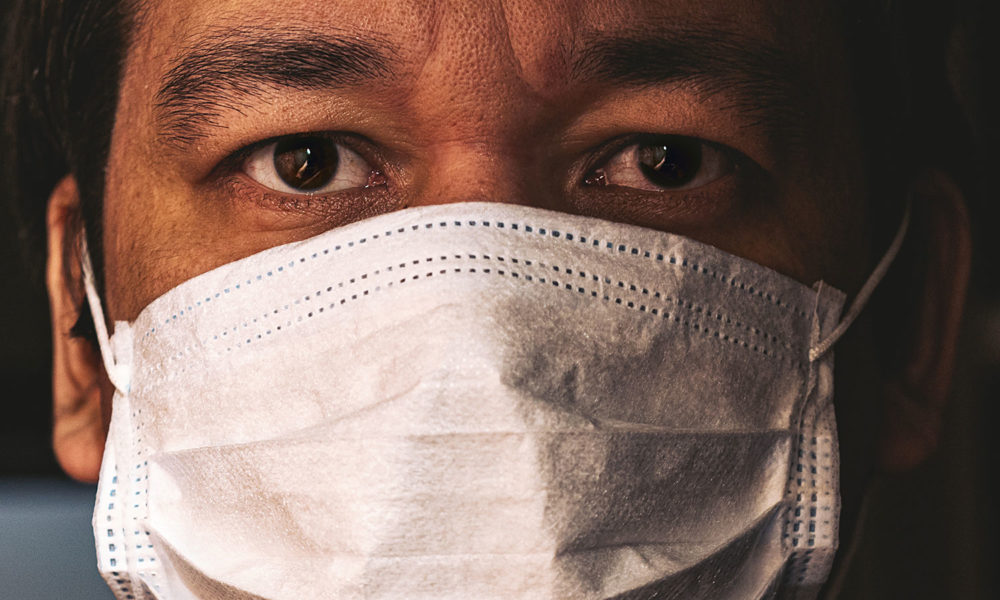While the Trump administration spins the sunny and false narrative that COVID-19 is under control and fading away, our nation’s top infectious disease experts are telling it like it is—and it’s pretty frightening.
Over the past two weeks, we have watched the number of new confirmed coronavirus cases surge to new levels, an 80 percent increase in just the past two weeks, with the racial disparities of the pandemic particularly stark. And we continue to see the disproportionate impacts play out in our nation’s workplaces, as our federal government steadfastly refuses to issue enforceable rules to safeguard workers from COVID-19.
Over the coming weeks, the current COVID-19 surge could quickly overwhelm health care institutions and intensive care units across the South and West, with residents of Houston and neighboring communities in Harris County, TX, now under a LEVEL 1 (RED) SEVERE threat alert—a threat level that means the outbreak is substantial, serious, and uncontrolled. Even in places where the crisis is ebbing, some health care workers still don’t have the protection they need.
Our nation’s frontline and essential workers continue to be caught in the crosshairs of this administration’s abject failure to follow the science and to anticipate, prepare for, and respond to the pandemic. Right now, and months into it, our nation is still failing to adequately protect workers—the backbone of our families, our communities, and the economy writ large–from the deadly impacts of COVID-19.
OSHA: Missing in action
Our nation’s system for safeguarding the health and safety of working people is in crisis. The Occupational Safety and Health Administration (OSHA) has always struggled to live up to its mission“to assure as far as possible every working man and woman in the nation safe and healthful working conditions,” but its challenges have become ever more prominent during the pandemic.
Over the years, OSHA has been hampered by inadequate funding, staffing, and resources needed to develop and enforce health and safety standards, conduct workplace inspections, provide the training and compliance assistance employers need, and make the crucial outreach to workers about their rights to a safe and healthy workplace. The agency has health and safety jurisdiction over seven to eight million workplaces across the country, covering approximately 130 million workers. With 2100 inspectors, that’s only one inspector for every 59,000 workers.
But OSHA has gone from hampered to virtually absent in the face of a pandemic that has killed or sickened tens of thousands of health care and other essential workers. It’s an agency missing in action and essentially AWOL. Perhaps this should come as no surprise. Since its inception, the Trump administration has–with pride–taken a wrecking ball to public health protections, favoring private over public interests, employers over working people, and profits over the health and safety of people.
Now our nation’s workers are paying the price (see here, here, here, here). And that price weighs particularly heavy on Black and other workers of color who are disproportionately represented in workplaces deemed essential (see here, here, here). At the same time, Black workers see higher rates of retaliation for raising COVID-related concerns.
OSHA has yet to issue any enforceable rules with mandatory protections to protect workers from COVID-19, despite calls from workers, unions, occupational health and safety advocates, and legislators. Instead the agency proffers general and voluntary guidelines in hopes of encouraging employer compliance. It has resisted all calls to issue a temporary emergency standard on airborne infectious agents. (The Trump administration abandoned efforts previously underway to develop such a standard when it came into power.) It is not even requiring that employers follow public health guidelines from the Centers for Disease Control and Prevention.
When the AFL-CIO submitted a petition to compel OSHA to issue an emergency temporary standard covering the coronavirus, a three-judge panel of the D.C. District Court denied the petition and instead gave deference to the agency—which has decided that a clear rule with mandatory protections is not needed.
Many workplace health and safety experts disagree with that assessment. But OK. A rule is one thing. Enforcement of the legislation’s general duty clause is quite another. [The clause: Section 5(a)(1) of the Occupational Safety and Health Act of 1970: “Each employer shall furnish to each of his employees employment and a place of employment which are free from recognized hazards that are causing or are likely to cause death or serious physical harm to his employees.”] Surely we can all agree that by now, the novel coronavirus is a recognized hazard.
Again, OSHA is abdicating its responsibility. Despite having received over 5,000 COVID-19 related complaints, by the end of May the agency had issued only one (yes one) COVID-19 related citation.
Return to work?
With the push to relax public health protections and reopen the economy, workers temporarily laid off during the shutdown are being called back to work. This leaves many with a painful choice. Given the increasing number of cases and the growing concern of asymptomatic spread, should they return to work? Is it safe? Will their employers take the precautions needed to protect them and their loved ones?
Some states and employers are making the choice even more difficult, as workers who decide the risk is too great to return to their jobs may find themselves fired and permanently out of a job instead—and without unemployment benefits to boot.
We can and must do better
The COVID-19 crisis has shined a spotlight on our nation’s failure to adequately protect workers. To fill this void of federal leadership, states, unions, workers and their advocates, public health and legal experts, and non-governmental organizations are stepping into the breach to take and demand action.
Last week the state of Virginia issued the nation’s first emergency temporary standard to protect workers from infection. The BlueGreen Alliance (a coalition of labor and environmental groups) has created a tool to collect and share information from workers on the status of safety protections in their workplaces. Unions are providing resources and workers are organizing to demand safer working conditions. Non-profit organizations and labor scholars are identifying and advocating for the broader policies and reforms needed to address the profound and intersecting issues impacting our nation’s workers and their families—significant health disparities, a broken regulatory system, weak labor laws, an inadequate social safety net, extreme economic and political inequalities, and pervasive structural and institutional racism (see here, here, here).
Worker health is public health; public health is worker health. Now more than ever, we need to raise our individual and collective voices to call on our nation’s leaders to step up to the plate and give our nation’s workers the protections, rights, and benefits they need and deserve.

